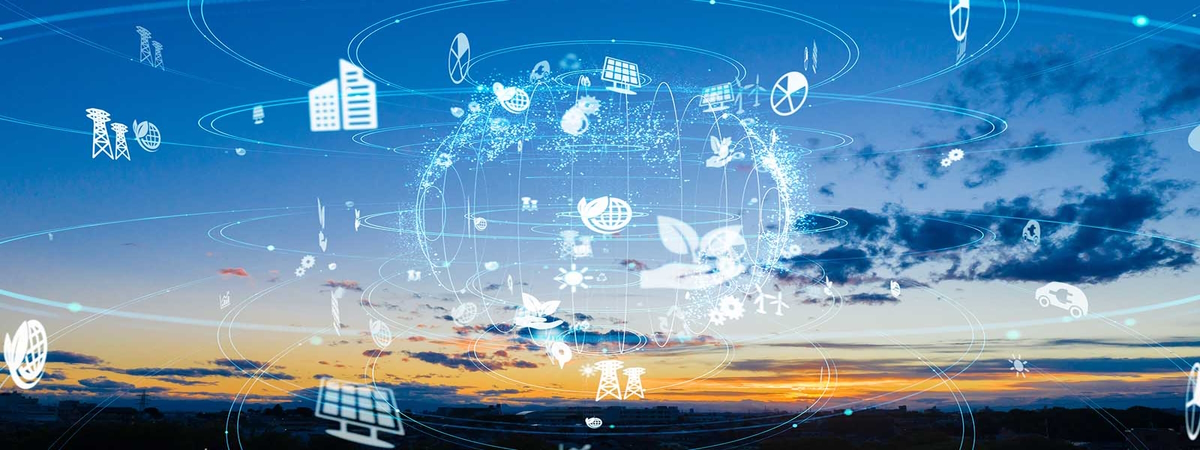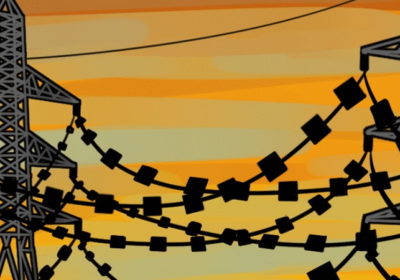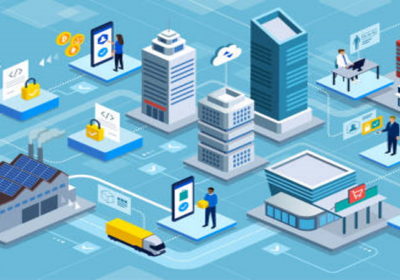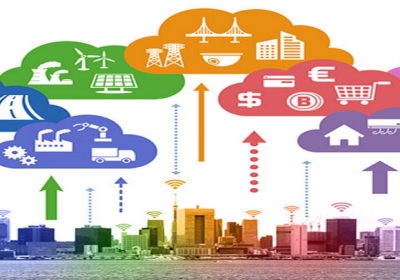The combination of artificial intelligence, augmented reality, IoT and blockchain offer opportunities to optimise many of a city’s information systems to help us improve its infrastructure and services to its residents

The implementation of new technologies to transform a city into a Smart City involves the integration of advanced systems to improve the quality of life of citizens and increase the efficiency of public services. In fact, one of the key aspects of a Smart City is the provision of timely and accurate information to citizens, contributing to greater transparency and participation in decision-making about what should be done in a city and how it should be done.
We know from the experience of pilot projects in many cities around the world that the management of public services in a city with technologies framed within the Industry 4.0 paradigm can significantly improve their efficiency, from public transport systems, which can be optimised and managed with technologies such as data analytics and artificial intelligence, to waste management or electricity supply. In this first aspect, operational data from transport systems can be used to improve route planning, traffic management and demand tracking. In addition, the implementation of sensors and contactless payment technologies in vehicles often improves the efficiency and convenience of public transport.
In general, any public service that involves data collection and analysis can benefit from the application of technologies such as AI, IoT and augmented reality. Managing these public services with these new technologies not only improves their efficiency, but also reduces costs and the city’s carbon footprint. With the increasing environmental awareness of a large part of the population and the demands of governments on companies to reduce their environmental impact, the support of technological advances is inevitable.
Which technologies are at the top of the list?
Firstly, artificial intelligence (AI), which can be used to process large amounts of data and provide citizens with accurate and up-to-date information. The AI that is being developed, either through adaptations of existing products such as ChatGPT or the dozen or so competitors that have emerged recently, can be trained to analyse data from a variety of sources, such as real-time sensors that measure city conditions, social networks of information from city councils and public services, news bulletins and government databases, etc., and provide relevant and useful information to citizens based on their specific needs.
As is already commonplace, current AI-based information systems can provide information on traffic conditions, air quality, parking availability and the location of cultural events and activities, among other things. All in near real-time and tailored to each user in the city. In a parallel application, intelligent video surveillance and sound detection can be used to improve public safety, as has been tested in some US cities, where gunshot sounds can be detected and the city’s security services automatically alerted to the scene of a potential problem.
Another technology that can improve citizen information services is augmented reality (AR). AR allows digital information to be superimposed on the real world through mobile devices and smart glasses, which can provide citizens with real-time information and enrich their experience in the city, especially to encourage tourism, both local and foreign, by providing information in multiple languages. For example, AR can provide information on nearby historical buildings, restaurants and public services through a mobile app, and can be a great help in facilitating movement around the city and developing the cultural and leisure life of its residents.
On a less “visible” side to the citizen, the use of IoT networks can also be used to improve citizen information services in a smart city. IoT involves connecting physical objects to the Internet, allowing real-time data to be collected about the urban environment and providing useful information to the people who need it. For example, IoT sensors can measure air quality and provide real-time pollution alerts on a neighbourhood basis, allowing municipal services to set up alerts for high pollution levels, which are more than common in many cities around the world at certain times of the year.
Another IoT application and service that already relies heavily on this technology is waste management, which has been enhanced in recent years by the introduction of smart sensors in waste bins, allowing for more efficient collection and reducing the amount of waste that ends up in landfill. Waste identification technology can be used to sort recyclable waste from non-recyclable waste, helping the city to achieve its sustainability goals, or at least reduce the amount of waste that ends up in incinerators without being recycled. Similarly, the use of smart sensors and real-time monitoring of energy consumption in buildings and public areas allows for better energy management and identification of savings opportunities.
Finally, also on the side of the technological infrastructure supporting city services, blockchain technology is a potential tool to improve the transparency and security of citizen information services. Blockchain networks provide an immutable and decentralised record of transactions and data, ensuring transparency and trust in the exchange of citizen information. In this case, the blockchain network can be used to provide secure information on election results, public spending or important government decisions. Furthermore, blockchain technology can be used in combination with the above in applications such as telemedicine and remote patient monitoring, which can improve the accessibility and quality of healthcare services by storing medical data in a completely secure manner.
In conclusion, the implementation of these technologies requires careful planning and close collaboration between local authorities and technology companies, but the result can be a smarter, more efficient and connected city.



